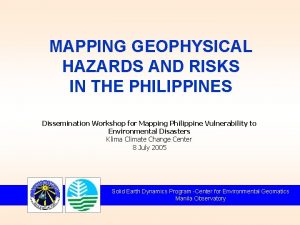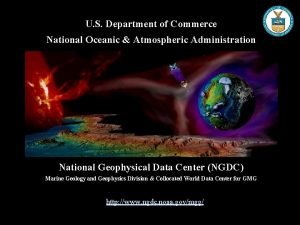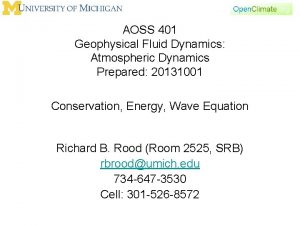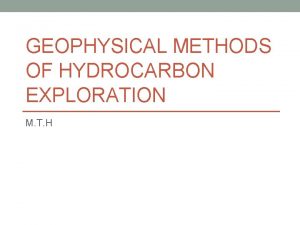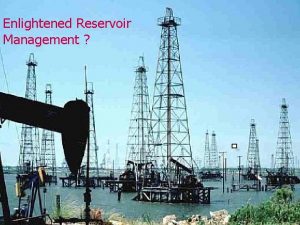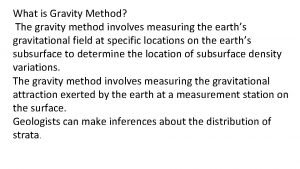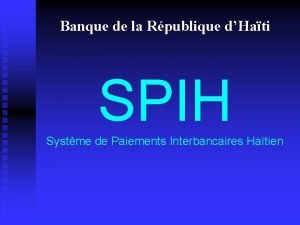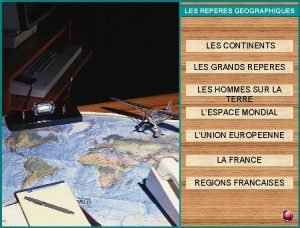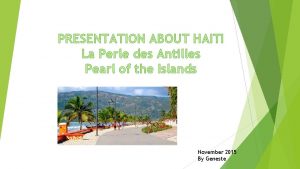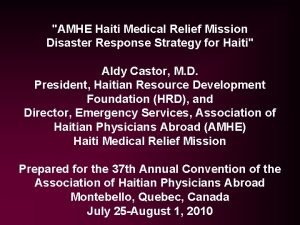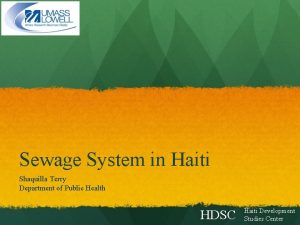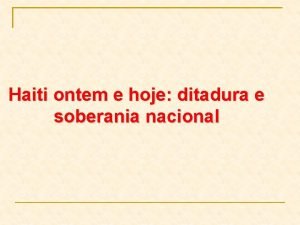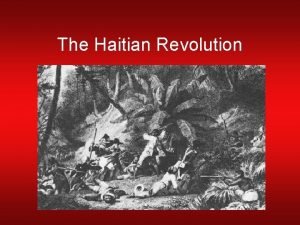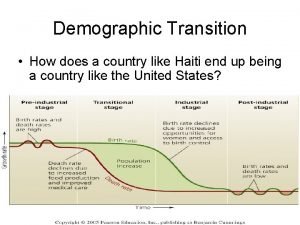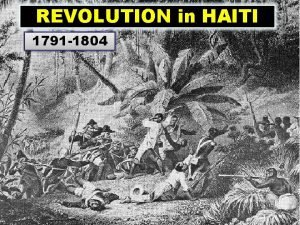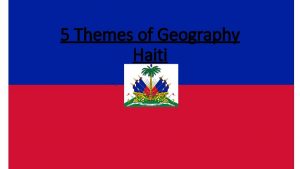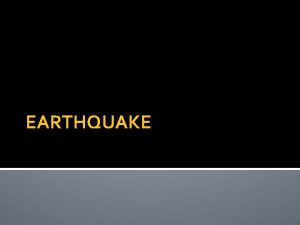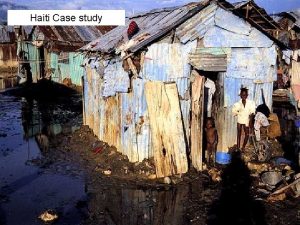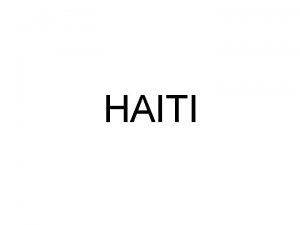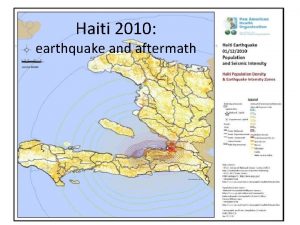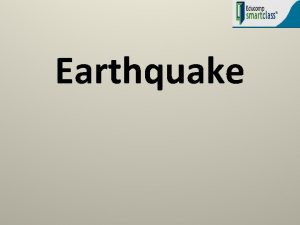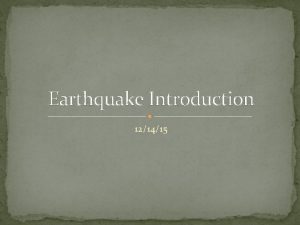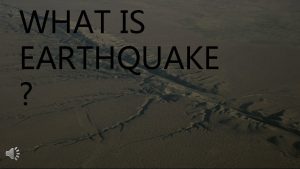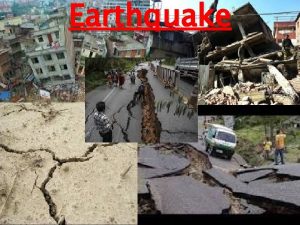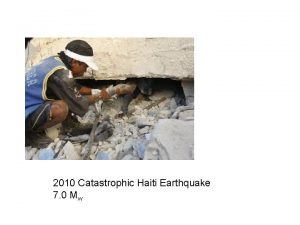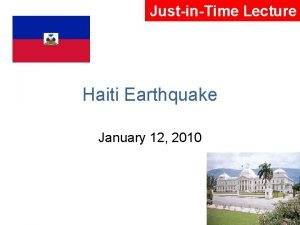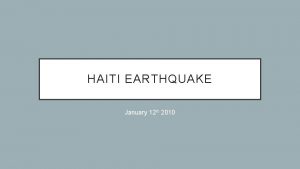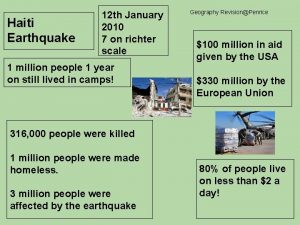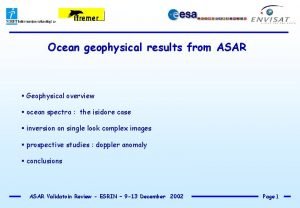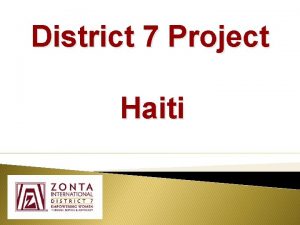NearSurface Geophysical Investigation of the 2010 Haiti Earthquake





















- Slides: 21

Near-Surface Geophysical Investigation of the 2010 Haiti Earthquake Epicentral Area Eray Kocel, Robert R. Stewart, Paul Mann, and Li Chang AGL Research Update, University of Houston April 2014

Outline • Introduction • 2010, Haiti Earthquake with 200, 000 death • No surface expression • Recent studies suggesting the existence of a blind fault • Selection of Survey Location • Léogâne fan= Epicentral area • No prior on-land seismic reflection data • Geophysical data • Density and Ultrasonic Lab. Measurements • Seismic Data • P-wave Refraction • Shear-wave via MASW • Shear-wave refraction • P-wave reflection • Gravity Data 2 • Integrated Near-Surface Results • What we have learned so far

Haiti We are only 900 miles away from a major plate boundary Houston North American Plate Hispaniola Caribbean Plate 3

Haiti Project January 12, 2010, 7. 0 magnitude. Known: Major strike slip fault, Enriquillo Plantain Garden Fault Zone. Hypothesis: Unrecognized, neighboring fault (Léogâne) 2010 Earthquake epicenter Objective (1) Characterize and analyze the subsurface structure (2) Measure near-surface sediment properties (3) Attempt to find and understand the blind faults that may have given rise to the 2010 earthquake (4) Better understanding the local geology 4

Survey Locations Why Léogâne? • Recent studies concentrated at this area o Interferogram and Aftershock studies o Uplift studies o Aerial and Satellite images o Seismicity studies • Enriquillo fault is dipping towards south • Léogâne fault is dipping towards North 5 Hayes et al, 2010 Calais et al, 2010

Laboratory Measurements Sample • No outcrop B in the area, only fan ρ= sediments V 0. 25 p Gardner’s relationship • = 0. 31, Sample and Cm collected 20 km Vp=A 2250 away • Sample B is collected 5 km away • Survey location; ρ Just south of EPGFZ estimated = 2. 13 g/cc ρ measured= 2. 01 g/cc 6

Léogâne Surveys Sources: ü 2012 - Hammer Source 4. 5 kg ü 2013 -Accelerated Weight Drop 45 kg Ø 2014 - Vibroseis 7

P-wave Refraction Studies Analysis completed on 2 seismic lines (Line A and Line B) for a 80 m deep model Line A (1)Top layers are thicker towards south (2)Low P-wave velocities for top 40 to 50 m (3)Relatively consolidated layer boundary is located between 40 to 50 m 8 Line B

Shear wave studies Shear wave velocities obtained by MASW method Line A • Low S-wave velocities for 20 m deep model Line D • Line A- top layer shows slight thickening towards south • Overlapping lines (B and D) • Velocity inversion on line B and D observed 9 Line B

P-wave Reflection Studies Time migrated images revealed up to 500 ms (roughly 350 m) Line A • Overall low velocities observed • Top-low velocity layer thickens towards South • Abruptions and discontinuities observed • Strong reflection around 60 -80 ms 10 Line B

Gravity Analysis • Top sediment density obtained from lab. measurements and Gardner’s estimation, 2. 0 g/cc • The bedrock the density is 2. 7 g / cc • No prior well or seismic data • Thinning of layers towards North. • Localized gravity anomalies interpreted as the affects of faulting 11

Integrated Near-Surface Results • Known: (1)EPGF dipping south, (2)survey location • Gravity surveys: Thinning of fan sediments towards North • Refraction seismic: (1)Thickening low velocity layers towards South, (2)Boundary at 50 m depth • Reflection seismic: (1)Channel bodies, (2)Some minor faults distance • Lab. Measurements with Seismic: Limestone vs unconsolidated sed. Boundary around 50 m Subsurface Layers Relatively consolidated limestone unit <2250 m/s >2250 m/s

Future Plans Completed ü 2012 and 2013 surveys were completed üNear-surface analysis provided useful geotechnical information üFirst on-land reflection seismic data üTested node systems Future plans • 2014 surveys with stronger seismic source • Imaging target up to 1 -2 km • Full deployment of nodes (donations from Geospace) 13

Acknowledgements • Geoscientists Without Borders • Allied Geophysical Laboratories • Anoop William • Haiti Bureau of Mines and Energy employees • Gedco-processing software 14

THANK YOU 15

16

17

Depth (m) 0 18 50 350 0 50 350

Houston North American Plate Hispaniola Caribbean Plate 19

Future Work depth distance 20 Subsurface Layers

Distance (m) 23 24 m/s 140 100 Time (ms) 0 /s 110 m 250 /s 0 m 500 26 5 m /s 850 200 250
 Geophysical hazard map
Geophysical hazard map National geophysical data center
National geophysical data center Geophysical fluid dynamics
Geophysical fluid dynamics Gravity method of geophysical exploration
Gravity method of geophysical exploration Reservoir geophysical corporation
Reservoir geophysical corporation What is gravity method
What is gravity method Spih definition
Spih definition Haiti amerique international
Haiti amerique international Mc donald haiti
Mc donald haiti La perle des antilles
La perle des antilles Haiti
Haiti Effluent pumps haiti
Effluent pumps haiti A luta de independência do haiti
A luta de independência do haiti Oge haiti
Oge haiti Haiti revolution map
Haiti revolution map Rev cafe haiti
Rev cafe haiti Frantz large haiti
Frantz large haiti Haiti
Haiti Haiti dtm stage
Haiti dtm stage Barnes pumps haiti
Barnes pumps haiti Haiti
Haiti Absolute location of haiti
Absolute location of haiti
